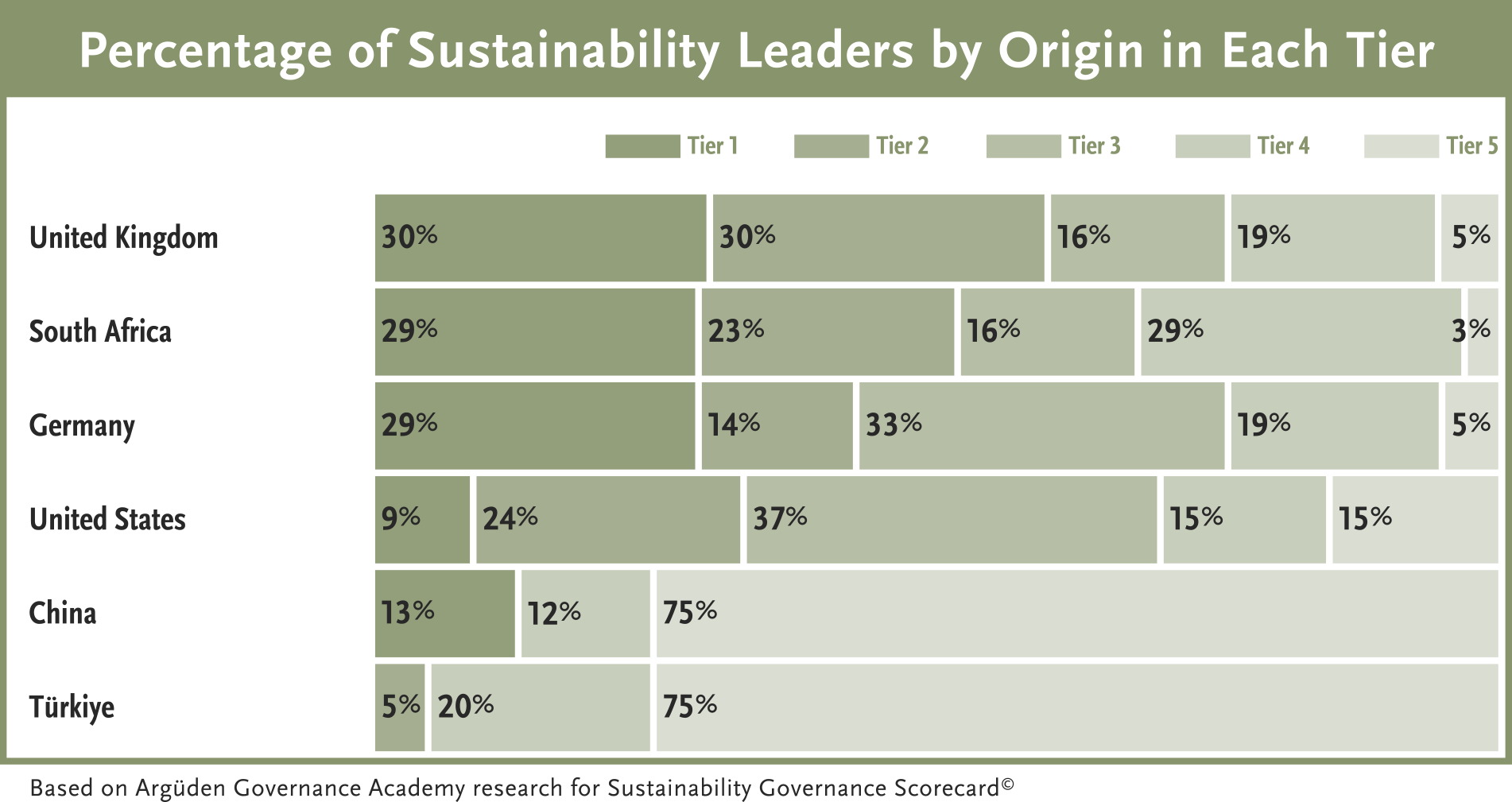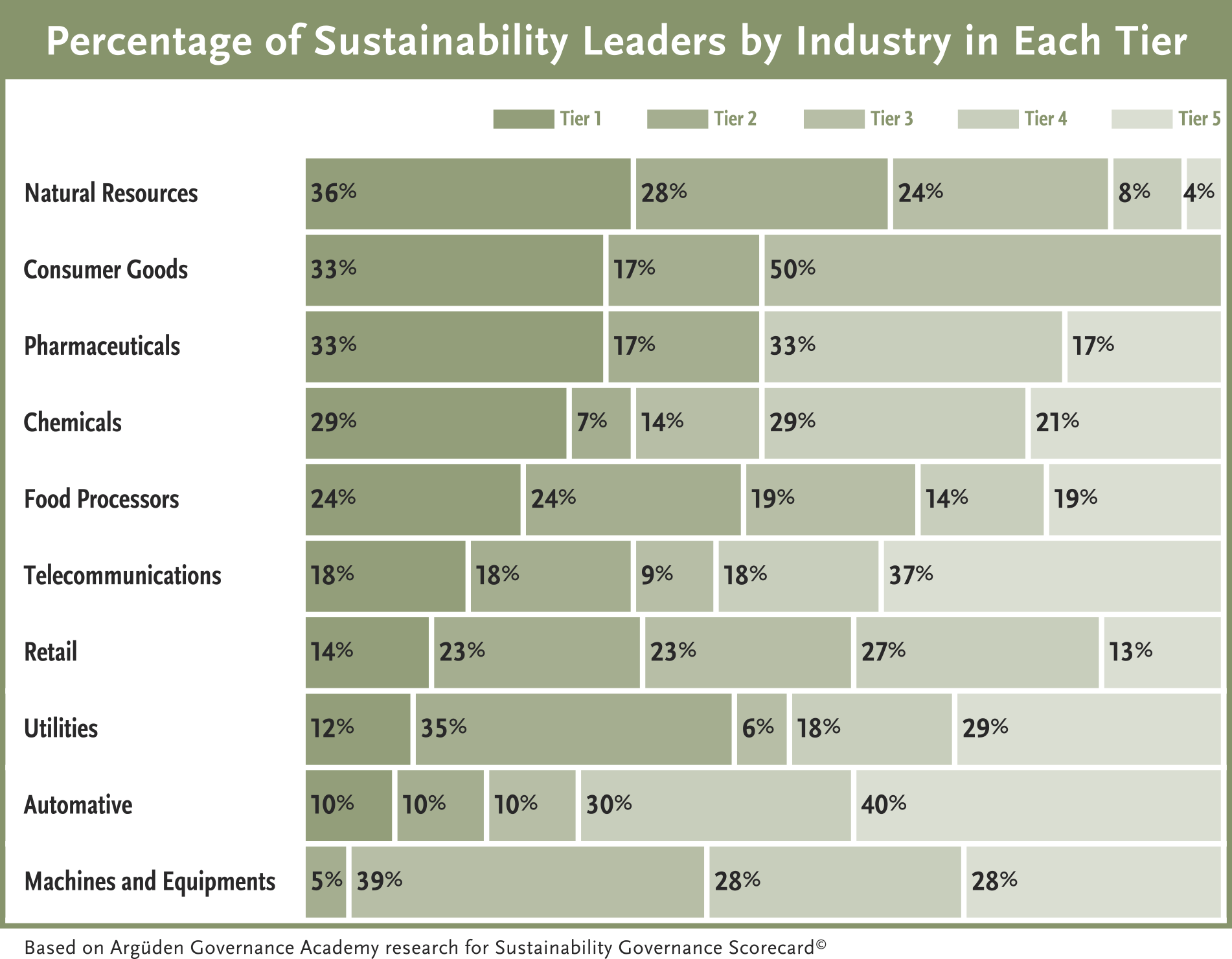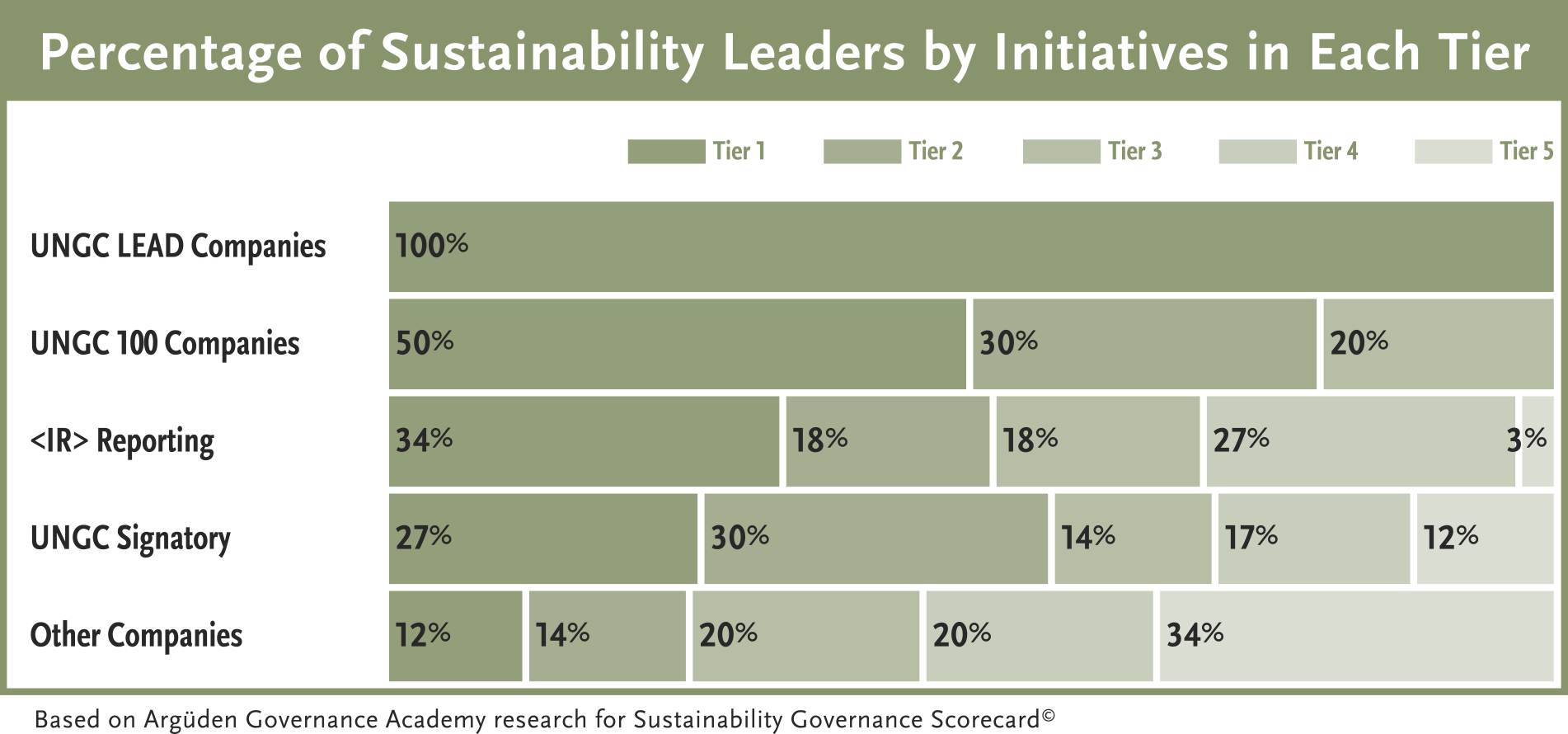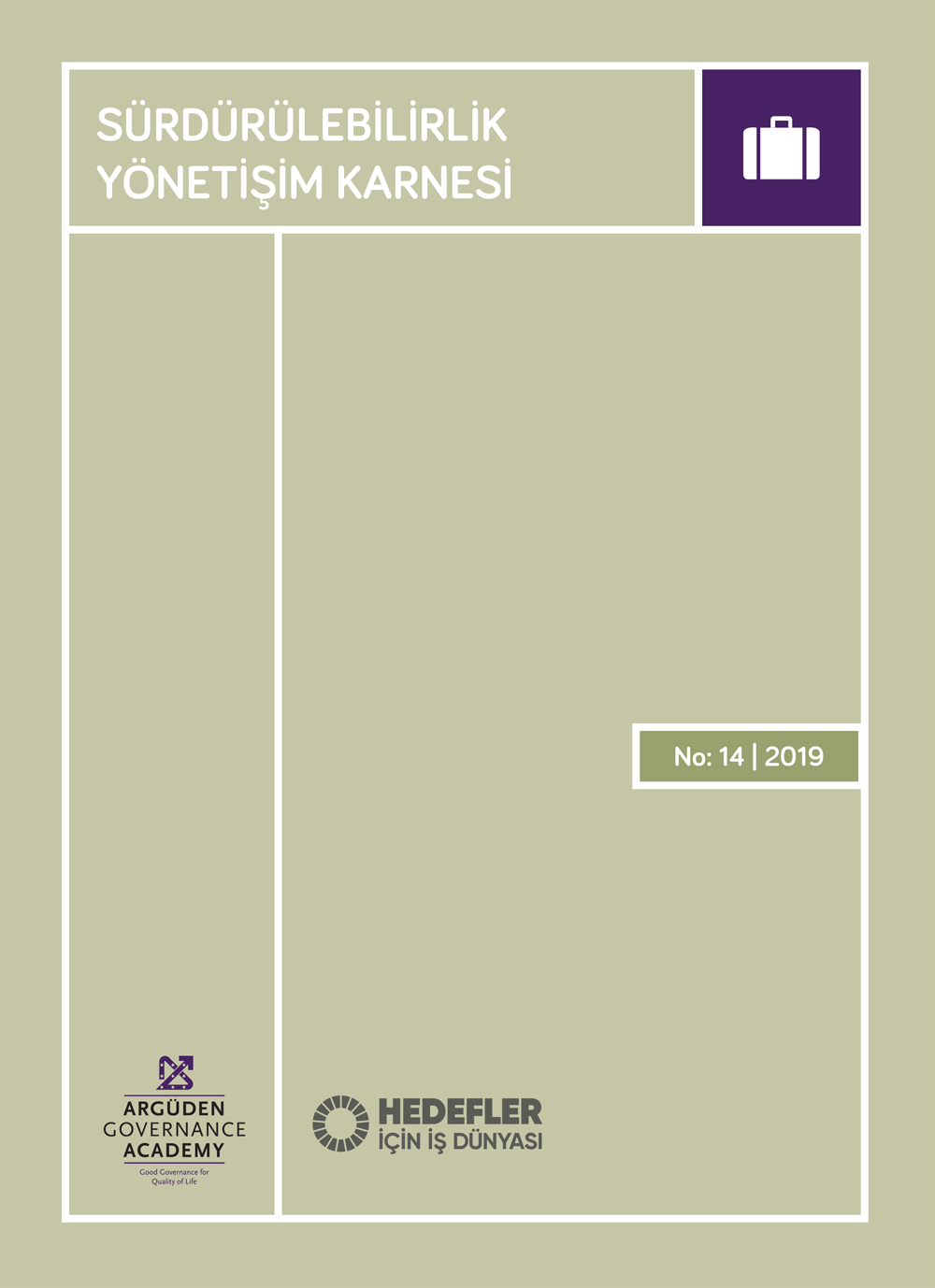Overall Evaluation
To Start With…
The Sustainability Governance Scorecard consists of four main areas which are guidance from the board, implementation and its coverage, oversight provided by the board, and learning culture throughout the organization. The results are shown based on aggregate scores of those four areas. Our research shows that each of the analyzed companies is a Global Sustainability Leader (GSL) with their outstanding efforts in sustainability governance.
We have concluded that there are country or industry wise differences either due to regulations, culture, or the nature of the industry. Additionally, adopting global initiatives or approaches make reasonable differences in the sustainability governance quality of the GSLs.
More than half of the GSLs in United Kingdom and South Africa are either in the Tier 1 or Tier 2. They are followed by Germany, United States, China, and Türkiye. In United Kingdom, more than half of the GSLs are signatories of United Nations Global Compact (UNGC), and in South Africa, all the companies have adopted Integrated Reporting (<IR>). We believe that adopting <IR> or being a signatory of the UNGC makes a difference for sustainability governance.
More than %50 of the GSLs in natural resources, consumer goods, and pharmaceuticals are in the Tier 1 or Tier 2. We believe that this result is due to either tight regulations and longer term thinking due to their investment horizons in natural resources and pharmaceuticals or being closer and more sensitive to the consumers.


Among the GSLs, all of the UNGC Lead Companies are in the first Tier. 50% of the UNGC 100 Companies and 34% of the <IR> Reporting GSLs are Tier 1 companies. We find that companies embracing the UNGC and the <IR> Framework seem to have better chances of incorporating sustainability into their culture by providing better governance of their sustainability efforts.

The results of the SG Scorecard show that there is significant room for improvement in the effectiveness of execution and accountability of the sustainability programs of even the leading companies. A few examples for the key areas of potential improvement are listed below:
- Evaluating the sustainability performance related to governance (19% of the GSLs makes evaluation.),
- Having sustainability skill in the Board and showing it in the skills matrix (11% of the GSLs have skills matrix and listed sustainability as a skills it its skills matrix),
- Setting sustainability KPIs for executive compensation (15% of the GSLs shares sustainability KPIs for Executive Compensation),
- Adopting and aligning with SDGs (Only 16% of the GSLs aligned its strategy with SDG 16 Peace and Justice Strong Institutions and only 19% of them aligned with SDG 14 Life Below Water).
Dr. Fatma Öğücü Şen

